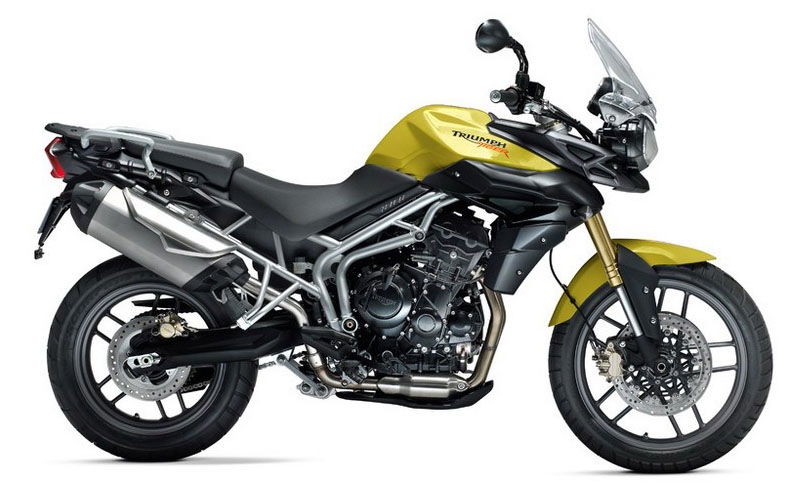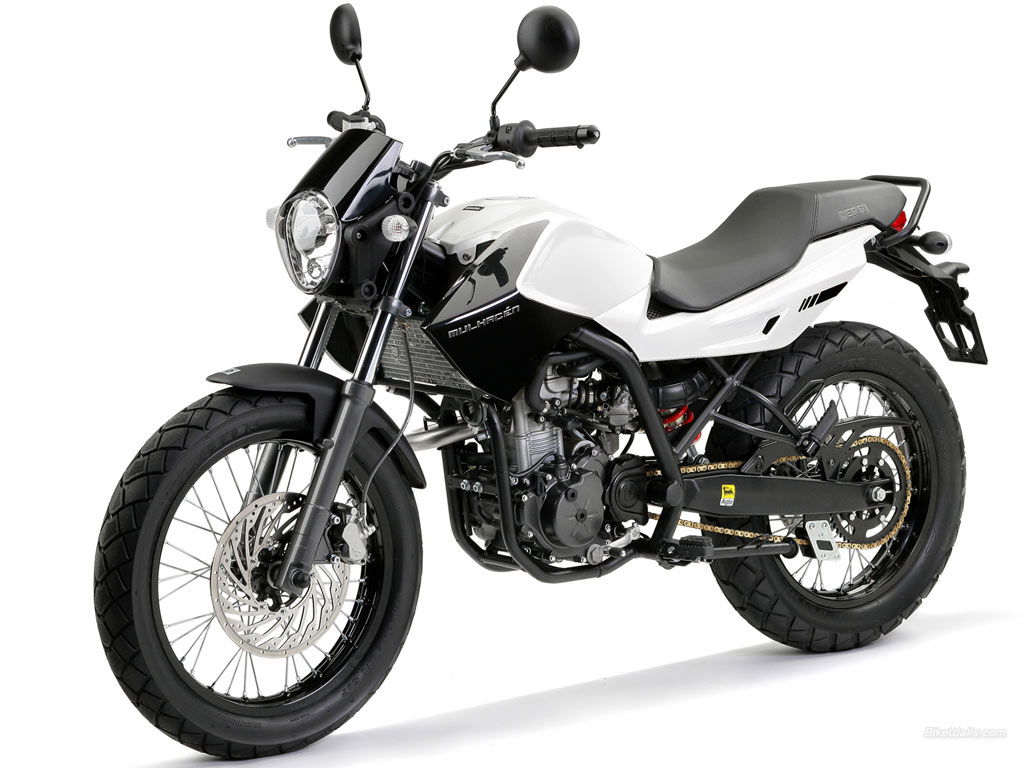Tiger 800 XC (2011) review
Triumph’s Tiger 800XC is aimed at the more adventure-minded bikers out there. The ones that, while they’re filtering through traffic on their daily commute, are actually imagining handling out water to local kids at a remote stop in Africa. It’s a fantasy that’s helped BMW sell thousands of dual-purpose bikes.

Triumph’s Tiger 800XC is aimed at the more adventure-minded bikers out there. The ones that, while they’re filtering through traffic on their daily commute, are actually imagining handling out water to local kids at a remote stop in Africa. It’s a fantasy that’s helped BMW sell thousands of dual-purpose bikes.
We rode the Tiger 800XC after spending the previous day on the roads on the standard Tiger 800. The Tiger 800 is good: it’s very competent, mild mannered and easy to click with. So surely some longer-travel suspension, wider bars and a larger front wheel with different tyres won’t change that? Well, for me, it did.
Hacking through the mountain roads on the Tiger 800XC, I didn’t have the same level of confidence I had on the Tiger 800. The XC rides like the bike it looks like, which may sound obvious but what I liked about the Tiger 800 is that despite its appearance and its stance, once you were rolling, it shed its visual weight and off-road pretentions and was simply a very sweet handling bike.
The Tiger 800 is very nimble, it feels more like a naked road bike and shows just how much this sector has improved in the last 5 years. There’s not one outstanding thing that I could attribute to the reduced amount of confidence I had in the XC on the road, so let’s look at the facts and figures.
The XC sits 35mm taller and has a slightly longer trail, therefore a longer wheelbase, but only by 13mm. With 220mm travel in the front forks, the XC’s suspension has 40mm more travel than the standard Tiger 800. The rear wheel has 215mm of travel, 45mm over the standard Tiger 800. Let’s not forget the 21” front wheel on the Tiger 800XC and the fact it’s fitted with Bridgestone Battlewings and not the Pirelli Scorpion tyres that are on the Tiger 800. That all adds up to a bike that has different dynamics and therefore riding characteristics.
Of our groups of testers, half of those I spoke to preferred the XC’s handling over the standard Tiger 800 and put it down to a slower turn-in. I felt the front wandering wide on the XC and I know that my confidence is built-up or eroded by my ability to trust the front-end. It doesn’t matter how good or bad a rider you are, if the bike goes where you want it to, you’re going to build up trust and confidence. On the XC, I wondered whether I might be taking it off-road sooner than Triumph had planned us to.
Triumph’s Tiger 800XC is aimed at the more adventure-minded bikers out there. The ones that, while they’re filtering through traffic on their daily commute, are actually imagining handling out water to local kids at a remote stop in Africa. It’s a fantasy that’s helped BMW sell thousands of dual-purpose bikes.
We rode the Tiger 800XC after spending the previous day on the roads on the standard Tiger 800. The Tiger 800 is good: it’s very competent, mild mannered and easy to click with. So surely some longer-travel suspension, wider bars and a larger front wheel with different tyres won’t change that? Well, for me, it did.
Hacking through the mountain roads on the Tiger 800XC, I didn’t have the same level of confidence I had on the Tiger 800. The XC rides like the bike it looks like, which may sound obvious but what I liked about the Tiger 800 is that despite its appearance and its stance, once you were rolling, it shed its visual weight and off-road pretentions and was simply a very sweet handling bike.
The Tiger 800 is very nimble, it feels more like a naked road bike and shows just how much this sector has improved in the last 5 years. There’s not one outstanding thing that I could attribute to the reduced amount of confidence I had in the XC on the road, so let’s look at the facts and figures.
The XC sits 35mm taller and has a slightly longer trail, therefore a longer wheelbase, but only by 13mm. With 220mm travel in the front forks, the XC’s suspension has 40mm more travel than the standard Tiger 800. The rear wheel has 215mm of travel, 45mm over the standard Tiger 800. Let’s not forget the 21” front wheel on the Tiger 800XC and the fact it’s fitted with Bridgestone Battlewings and not the Pirelli Scorpion tyres that are on the Tiger 800. That all adds up to a bike that has different dynamics and therefore riding characteristics.
Of our groups of testers, half of those I spoke to preferred the XC’s handling over the standard Tiger 800 and put it down to a slower turn-in. I felt the front wandering wide on the XC and I know that my confidence is built-up or eroded by my ability to trust the front-end. It doesn’t matter how good or bad a rider you are, if the bike goes where you want it to, you’re going to build up trust and confidence. On the XC, I wondered whether I might be taking it off-road sooner than Triumph had planned us to.
2011 Triumph Tiger 800XC specifications
Engine:
Type Liquid-cooled, 12 valve, DOHC, in-line three-cylinder
Capacity 799cc
Bore/Stroke 74.0 x 61.9mm
Fuel System Multipoint sequential electronic fuel injection
Exhaust Stainless steel three-into-one system with high level silencer
Transmission:
Final Drive X ring chain
Clutch Wet, multi-plate
Gearbox Six-speed
Oil Capacity 3.7 litres 1.0 US gals
Cycle Parts:
Frame Tubular steel trellis frame
Swingarm Twin-sided cast aluminium alloy
Wheels Front 36-spoke 21 x 2.5”, aluminium rim
Wheels Rear 32-spoke 17 x 4.25”, aluminium rim
Tyres Front 90/90 ZR 21
Tyres Rear 150/70 ZR 17
Suspension Front Showa 45mm upside down forks, 220mm travel
Suspension Rear Showa monoshock with remote oil reservoir, hydraulically adjustable preload, 215mm rear wheel travel
Brakes Front Twin 308mm floating discs, Nissin two-piston floating calipers (ABS model available)
Brakes Rear Single 255mm disc, Nissin single piston floating caliper (ABS model available)
Front Master Cylinder Nissin master cylinder, 14mm diameter
Instrument
Display/Functions
LCD multi-functional instrument pack with digital speedometer, fuel gauge, trip computer, analogue tachometer, clock
Other Features
Coded key immobilizer, hand guards, radiator guards, auxiliary power socket, rear rack
Dimensions:
Length 2215 mm 87.1 in
Width (handlebars) 865 mm 34.0 in
Height without mirrors 1390 mm 54.7 in
Minimum seat height 845 mm 33.2 in
Wheelbase 1568 mm 61.7 in
Rake/Trail 23.1º / 91.1mm
Fuel tank capacity 19 litres 5 US gals
Wet weight 215 kg 473 lbs
Performance: (Measured at crankshaft to 95/1/EC)
Maximum power EC 95 PS 94 bhp 70 kW @ 9300rpm
Maximum torque EC 79 Nm 58 ft.lbs @ 7850rpm

